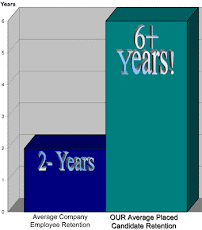
People with talent fail at an alarming rate within organizations. According to Robert Kelley and Janet Caplan, researchers who studied workers at Bell Labs, most talented hires wind up as average or below-average performers. Among the people at Bell Labs and those of competitors, Kelley and Caplan found that 85 to 90 percent of the extremely talented people hired never rose beyond average, when it came to productivity. They also found that the 10 to 15 percent of hires who rose to “star performance” status were eight times more productive than the average or mediocre performers.
Let’s say you’re responsible for the results of an organization employing 100 people. If your organization is average, seven of those people are star performers, eighty-three are average, and ten are slackers. Let’s say you encounter an economic climate that prohibits you from hiring and compels you to find a means of doing better with what you have. What would be your strategy?
According to our experience, there are, very likely, other star performers hibernating among your workforce. If you could convert just one mediocre performer into a star performer, the value of that conversion, according to the Bell Labs study, would be equivalent to adding seven average performers to your workforce at no additional cost to the organization.
Defining star performance
You can create star performers by taking two actions: 1.) Define star performance (to expect star performance you first need to define it) and 2.) Identify the work strategies consistent among star performers and absent among mediocre workers.
Organizations that have not defined superior performance, tend to experience lackluster growth. Companies that want to outpace the competition should commit to defining star performance, not just for one job but for all the key positions in your company.
Companies that have defined performance tend to use performance-based job descriptions that define not just the tasks essential to the job, but also the minimum expected and exceptional outcomes in the job. A star performer in a job would be a person who consistently achieves breakthrough outcomes.
The nine strategies of highly productive workers
The key to converting average or mediocre people to star status lies in determining and then coaching their competencies in nine areas. The Bell Labs study identified those nine areas as the strategies that workers use to get their work done. Here are the nine strategies of highly productive workers:
• Taking initiative – Star performers go beyond just informing someone of an error, they correct it. The mediocre don’t.
• Networking- Star performers establish their anticipated needs for outside input prior to beginning a project. The mediocre wait until there’s a need, and then they look for help.
• Self-management- Stars know that self-management goes beyond time management and includes management of effort and knowledge. The mediocre feel that time management is all that’s needed.
• Teamwork effectiveness- Star performers are comfortable with being either a follower or a leader. The mediocre tend to push too hard for leadership roles.
• Leadership – Star performers know that small leadership roles are as important as the bigger, more visible ones. The mediocre are often disappointed with smaller, less viable leadership assignments and, as a result, perform at a level expressing their displeasure.
• Followership – Star performers are aware of the value of following as well as leading and understand the need to contribute to the leader’s and the team’s performance. The mediocre are often difficult to work within a team setting and focus more on getting credit for themselves.
• Perspective – Superior performers are able to see how their immediate work factors into the “big picture.” The star performer is invested in taking on other view points, like those of the customer, manager or other team members. Mediocre workers often seem to have a world defined by the length of their reach. They tend to have difficulty in accepting thoughts and ideas from those other than themselves.
• Show-and-Tell – Star performers are master presenters. The mediocre are PowerPoint specialists.
• Organizational savvy – Star performers understand how they contribute to the overall performance of the organization and are capable of navigating through the competing interests of an organization. The mediocre are often perplexed with organization politics and hide behind the mantra of not being a “political person.”
Understanding theses strategies and then defining them for your workforce is a powerful tool among the steps necessary to convert mediocre workers to star performers.
In these difficult times, adding the equivalent of seven average performers to you workforce by converting just one to star status is a strategy that addresses the pressing need to do more with less.
Stephen Blakesley is Managing Partner of GMS Talent L P, and author of the book Strategic Hiring – Tomorrow’s Benefits Today..














No comments:
Post a Comment